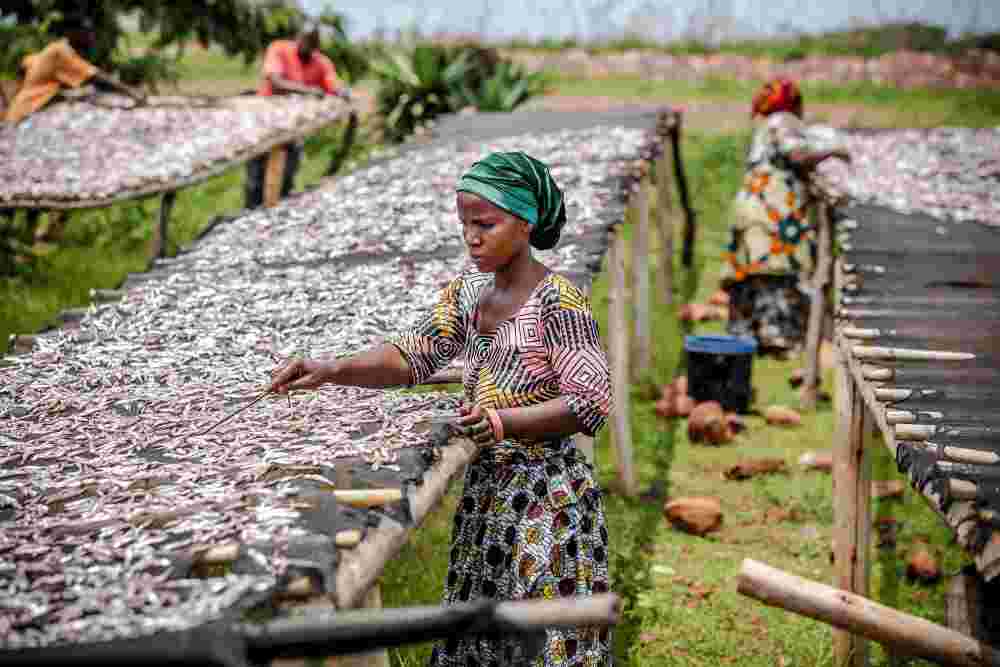Empowering Women in Small-Scale Fisheries for Sustainable Food Systems
Namibia, 2022
Get Microdata
Reference ID
NAM_2022_EWSFSFS_v01_EN_M_v01_A_OCS
Producer(s)
Molly Ahern
Collections
Metadata
Created on
Dec 01, 2023
Last modified
Dec 01, 2023
Page views
28593
Downloads
269
- Data files
- data_anon_ind
- data_anon_FGD
- data_anon_KII
Why is the proportion of SSF who farm fish like that? Explain (V23)
Data file: data_anon_FGD
Overview
Valid:
22
Type:
Discrete
Width:
255
Range:
-
Format:
character
Questions and instructions
Categories
| Value | Category | Cases | |
|---|---|---|---|
| Access to land, they don't own land | 1 |
4.5%
|
|
| Aquaculture is newly established form of agricultural activity, people don't know much about it, and Namibia does not receive rain through out the year, therefore water for aquaculture is scarce in some parts of the country. | 1 |
4.5%
|
|
| Because they have no excess to proper water bodies . | 1 |
4.5%
|
|
| Community have little information about fish farming as well as lack of funds to construct fish ponds. | 1 |
4.5%
|
|
| Establishment of fish farm are in progress | 1 |
4.5%
|
|
| Lack of adequate fishing gear. | 1 |
4.5%
|
|
| Lack of funds and it is time consuming. | 1 |
4.5%
|
|
| Lack of knowledge on how to farm fish | 1 |
4.5%
|
|
| Lack of money to set up an aquaculture, and skills of fish farming | 1 |
4.5%
|
|
| Lack of resources to farm fish and lack of knowledge. | 1 |
4.5%
|
|
| N/A | 1 |
4.5%
|
|
| No fish farming activities are taking place in this area | 1 |
4.5%
|
|
| No water sources Lack of interest or knowledge of aquaculture, no one has produced and made profits There have been no advocacy groups or training on aquaculture to this community | 1 |
4.5%
|
|
| People don't farm fish in Walvis Bay only buy from fishing companies and wholesale, some do catch their own fish for selling and to eat at home. | 1 |
4.5%
|
|
| People don't farm fish in Walvis Bay, the only noticable farming activities is for oysters, mussels and abalone alongside coastal zone. Small scale fisheries players buy fish in bulks from big commercial companies that have capacity to catch different spe | 1 |
4.5%
|
|
| People don't have land or the knowledge on how to culture fish | 1 |
4.5%
|
|
| People lack knowledge on farming in this area. It is expensive to farm fish in this area and they don't have starting capital or land. | 1 |
4.5%
|
|
| The program just started. | 1 |
4.5%
|
|
| There is no proper water bodies | 1 |
4.5%
|
|
| There is no space for farming fish Water is expensive as you only get it from the municipality There is no or less awareness on aquaculture in this area They prefer meat over fish | 1 |
4.5%
|
|
| Too expensive to farm in the coastal areas. Lack of money and land to start these farming practices. They have no knowledge of farming fish. | 1 |
4.5%
|
|
| lack of money and investors | 1 |
4.5%
|
Warning: these figures indicate the number of cases found in the data file. They cannot be interpreted as summary statistics of the population of interest.
